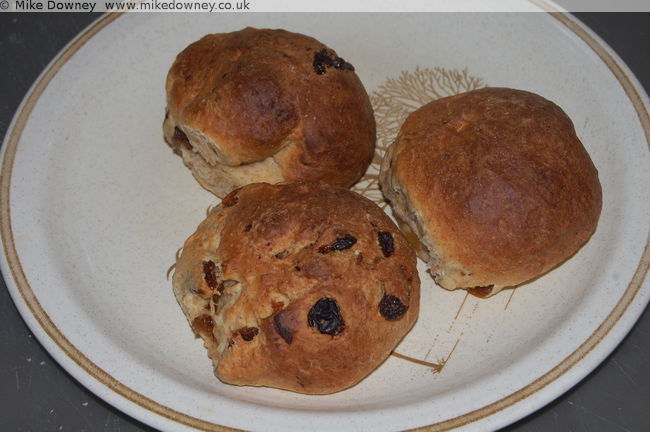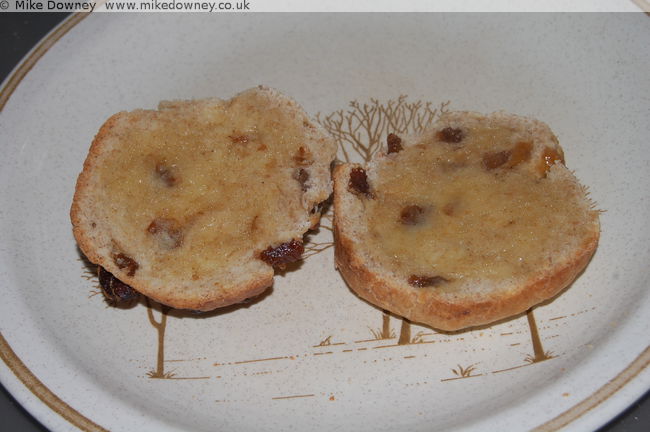Regional Cakeathon P: Penzance Cakes |
Story location: Home / food_and_drink / a_to_z / |
| 06/Apr/2015 |
This recipe came from The Country Housewife and Lady's Director', written by R. Bradley (who was Professor of Botany at Cambridge University) and published in 1728.

The 'same' in the recipe above refers to a Mrs. M.N. who provided several recipes for the book.
Take the Yolks of Eggs well beaten, put to them some Mace finely powder'd, with a few spoonfuls of Wine, a little Salt, and as much Sugar as you please; then add as much Flour as is necessary, and a small quantity of Ale-Yeast, and work your Dough pretty stiff; then add some fresh Butter, broken in little bits, and work it in till all the Paste has partaken of it, and the Dough becomes as stiff as at first. Make your Cakes then, and bake them. They will keep some time.
I was unable to find out anything of the history of the Penzance Cake or whether it was traditionally associated with an event or festival. I found one website (Three Hearth House - Chi Teyr Oles, Simple living in West Cornwall) which discussed the Harvest Festival but didn't give any concrete history.
I decided to make two versions of the cake, with and without currants (or more precisely sultanas), so some would be close to the original book recipe and some would be more like the version from the website above (which didn't actually give the recipe they used).
The original recipe was wonderfully vague, as was the fashion at the time, failing to mention any quantities or times. It didn't even mention any need to prove the dough but I took that as an oversight and left mine to rise.
My recipe:
- 1 medium egg, beaten
- 2 tbs wine, infused overnight with 2 cloves and a pinch of nutmeg.
- ¼tsp each of ginger and mixed spice
- a pinch of salt
- 2tbs sugar
- 2 cups of flour (a mixture of plain and wholemeal)
- 1 tsp bread yeast
- 40g butter
- 2 tbs sultanas
Since I don't have any mace, I steeped some nutmeg and a few cloves in the wine first. I also added ginger and mixed spice to the cake. I mixed everything in the order given in Bradley, adding ¾ of the flour initially, mixing more in while I kneaded in the butter. I divided the dough into two and kneaded sultanas into one half and left the other half plain. I shaped the dough into bread rolls and left them to rise for a few hours.

The dough was quite dense and took a long time to rise. I baked them at gas mark 4 for about half an hour or so, until they looked done. The taste and texture was similar to a hot cross bun.

